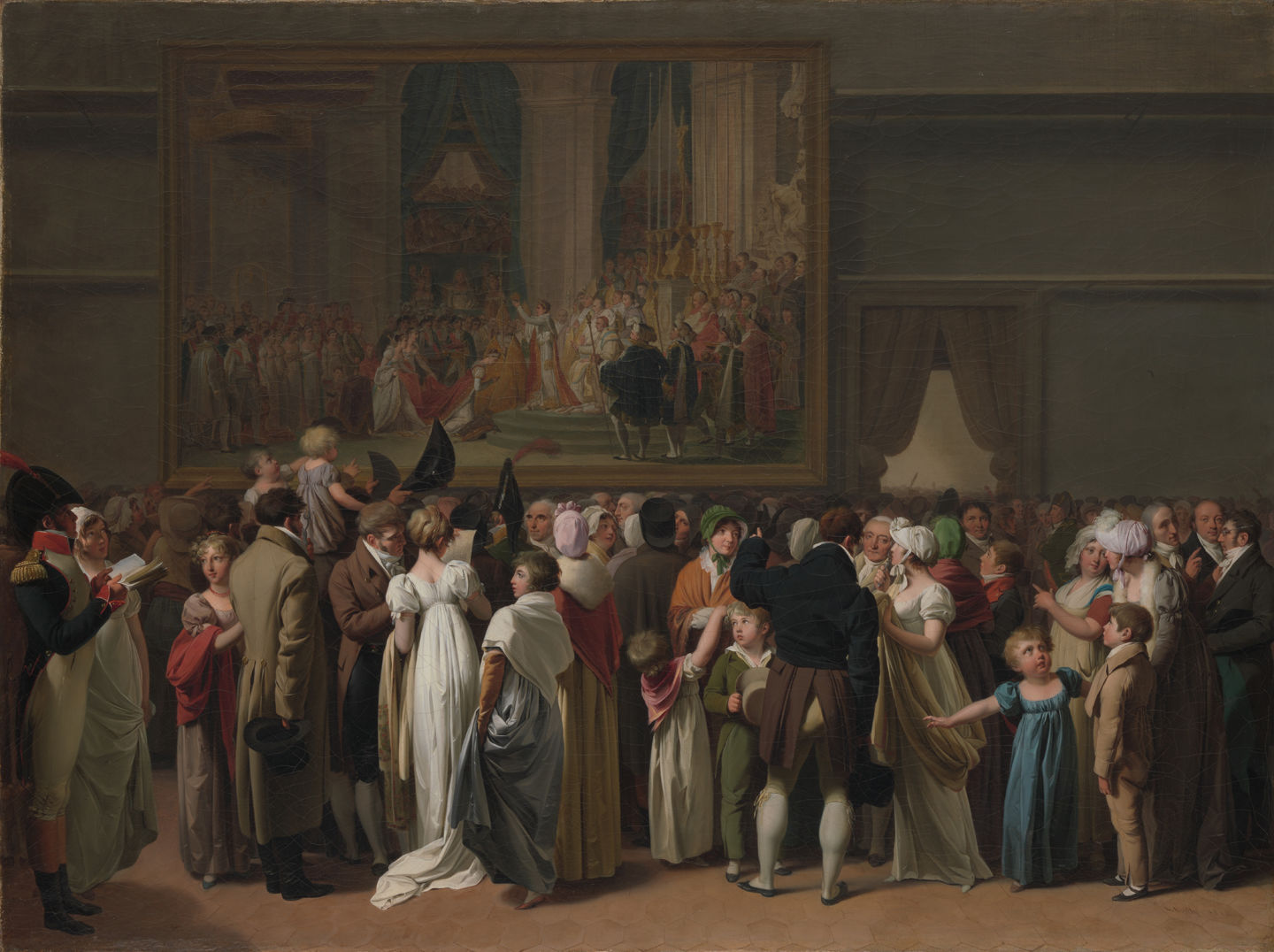President's and Director's Introduction
Daniel H. Weiss, President and CEO, and Max Hollein, Director
Charles and Jayne Wrightsman were perfectionists, their generosity and style were unmistakable, and they were universally admired by fellow trustees, staff, and Museum visitors. Their standards when acquiring a work of art and the breadth of their knowledge in the areas in which they took an interest were legendary. The Wrightsman Galleries, first opened to the public in 1969 and extended in 1974, already offered a display of French furniture and decorative arts that was unmatched in the Americas. The first painting the couple lent to the Museum was a Vermeer and their most important purchase a Jacques Louis David.
Louis Léopold Boilly (French, La Bassée 1761–1845 Paris). The Public Viewing David’s "Coronation" at the Louvre, 1810. Oil on canvas, 24 1/4 x 32 1/2 in. (61.6 x 82.6 cm). The Metropolitan Museum of Art, New York, Gift of Mrs. Charles Wrightsman, 2012 (2012.156)
In 1995, Jayne Wrightsman was nearing the end of her tenure as chairman of the Acquisitions Committee, a position in which she demonstrated her thoughtfulness and commitment to the Museum. That year she contributed to the purchase of Lorenzo de' Medici's birth tray, which, decorated with Scheggia's The Triumph of Fame, honored the late Sir John Pope-Hennessy. She also gave a portrait by Eugène Delacroix of his aunt, Félicité Longrois Riesener, painted in 1835. Brought to her attention by Everett Fahy, this was the first of a group of intimate French nineteenth-century portraits, both paintings and drawings, including many by Ingres, that she formed later in life.
"Going for Baroque," Keith Christiansen's winter 2005 Metropolitan Museum Bulletin, draws attention to one of the more remarkable aspects of the Museum's recent collecting: the formation, in the second half of the twentieth century, of a seventeenth-century Italian paintings collection. To this effort the Wrightsmans contributed a linchpin, Guercino's Samson Captured by the Philistines of 1619, which was rescued from a palace in war-torn Beirut in 1979. They also gave works by Luca Giordano and Guido Reni, and a marvelous painting on copper by Domenichino, Landscape with Moses and the Burning Bush. More recently our holdings were enhanced with purchases from the Wrightsman Fund, made with Jayne's approval: another copper, by Mola, and a large and very rare fresco cartoon, also by Domenichino.
The opening of expanded galleries of European old master paintings in 2013, with the Neoclassical gallery named in honor of Jayne Wrightsman, provided a capstone to decades' worth of inspired acts of generosity. On those walls hang landmarks of French painting that have transformed the Metropolitan's collection—François Gérard's magnificent portrait of Charles Maurice de Talleyrand and Louis Léopold Boilly's splendid, contemporaneous The Public Viewing David's "Coronation" at the Louvre, to name just two.
The Wrightsmans' interests extended well beyond paintings and decorative arts, and their largess within the areas of illustrated books and historical book bindings, as well as drawings, prints, and costumes (some from Mrs. Wrightsman's own archive) expanded the Museum's holdings immensely. In their passion for the Museum as a whole, in their dedication not only to its collection and its spaces, but also its expert staff, the Wrightsmans served as model patrons, standard-bearers for a generation of donors.
